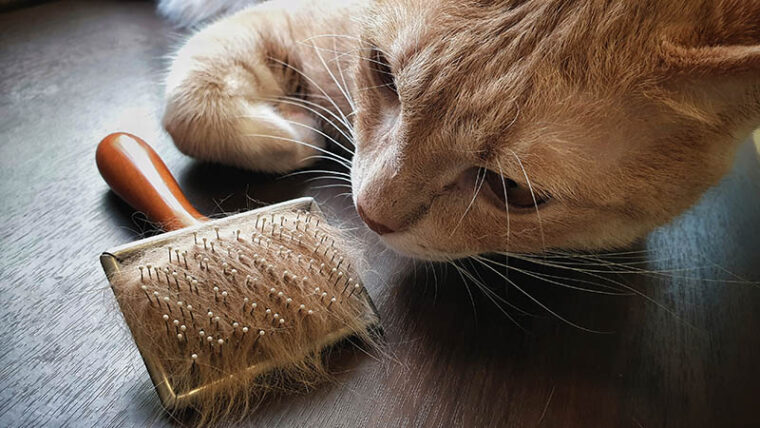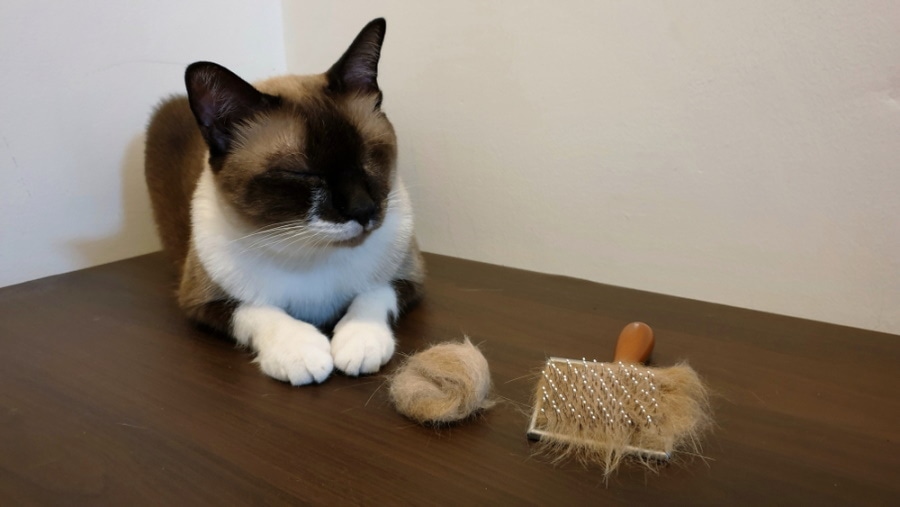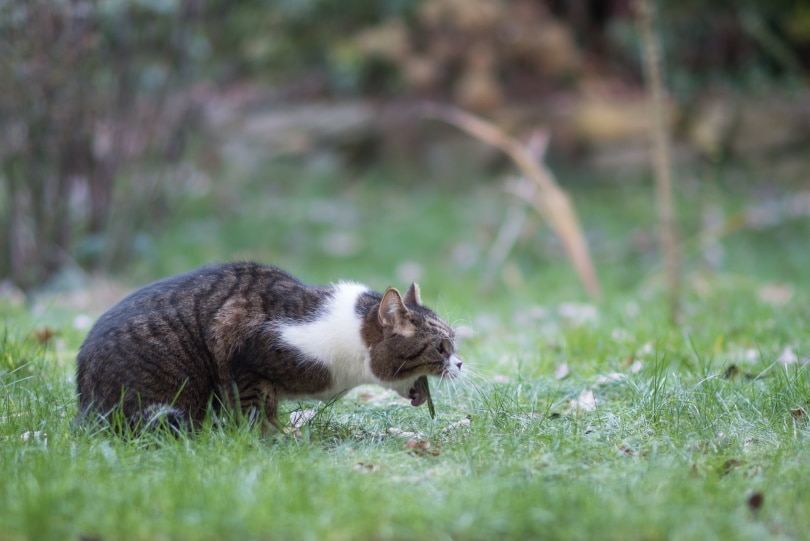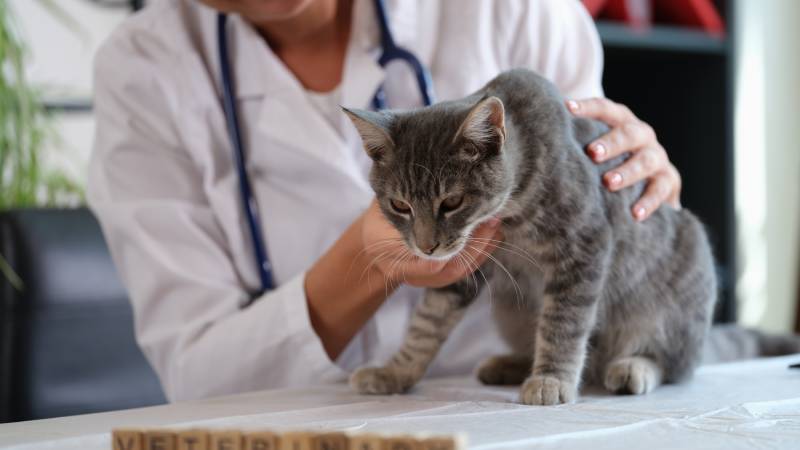
As a cat parent, you may be familiar with the retching sounds that indicate a hairball is making its way. Cats spend around 30% of their waking lives grooming themselves, and hairballs result from this behavior. While you have become used to the fact that owning a cat means dealing with hairballs, it shouldn’t be a frequent part of life for your cat. If your cat battles with hairballs, it could indicate a digestive health issue.
You may know when you see one, or at least think you do, but it is important to be sure, to know what to do about it.

What Does a Cat Hairball Look Like?
The appearance of hairballs can vary, and they are usually distinguishable from vomit. Identifying a hairball is important, so you don’t confuse it with vomiting, which may indicate a more serious issue.
Shape
Contrary to their name, hairballs are tubular-shaped as they conform to the shape of your cat’s esophagus.
Size
The size of a hairball can vary from an inch to a few inches. They are commonly the same size as an average human finger; small ones are the size of a pinky finger, and larger ones are as big as the index finger.
Color
The color of your cat’s hairball will be close to the shade of its fur. It will have a brown, green, or orange tint as it is discolored by the stomach acid and combined with your cat’s food and mucus.

Consistency
Hairballs are usually clumps of hair covered with slimy, slippery mucus, making them appear wet, they may be mixed in with part digested food. They typically retain their cylindrical shape after being thrown up, whereas vomit is often more liquid and does not contain as much hair.
What Causes Hairballs?
While cats continuously groom themselves, they remove hair while licking and ingest it. Their tongues move fur into their mouths, down their throat, and into their stomach.
In normal conditions, the hair that has made its way down to the stomach should simply pass through and be expelled with the feces, but hairballs occur when the cat’s digestive tract does not move the fur out as waste. When the ball of fur begins to irritate the stomach lining, the cat is triggered to vomit so it can be expelled.
Are Hairballs Normal?
A single hairball isn’t a cause for concern and is normal. Frequent vomiting of hairballs, especially if combined with other symptoms such as weight loss or diarrhea is not considered normal. Pet parents should take their pets to the vet clinic if there are concerns about the frequency of hairballs.
Many pet owners confuse hairballs with other types of vomit. The ratio of hair to additional material is the primary way to distinguish between vomit and hairballs. Vomit will consist primarily of fluids, bile, undigested food, and mucous, with a bit of hair.
If your cat is vomiting up hairballs regularly, it could indicate an underlying gastrointestinal disorder or other reasons for concern.
How Do I Know My Cat Has a Hairball?
Cats usually make a repeated vomiting or gagging type noise involving abdominal effort and a hunched posture. This will eventually be followed by bringing up a hairball. They are otherwise healthy and will return to normal activities as soon as they have finished with the hairball.

Causes for Concern
If your cat shows any of these symptoms you should contact your veterinary clinic:
How to Prevent Hairballs
To treat hairballs, you will need to determine the underlying issue, schedule an appointment with your veterinarian to help with this.
Home care prevention options include switching to a hairball control cat food because it provides additional benefits to the digestive system. Also make sure they have plenty of water. You can also feed your pet less food more frequently to promote better digestion.
Veterinary care is usually not required if your cat only has hairballs occasionally. You can help prevent hairballs by giving your cat a supplement (typically petroleum jelly-based) that will aid in the passage of fur through the digestive system.
When it comes to hairball prevention, grooming is the primary focus. Brushing your cat daily, especially long-haired cats, can remove loose hairs before your cat can ingest them. Stop your cat from excessive grooming as soon as you notice it, and investigate the cause as quickly as possible. Allow your cat to eat kitty grass or feed them hairball-prevention cat food.

Conclusion
Hairballs are not actually balls but are usually slimy and tubular-shaped. They can often be confused with vomit, so it’s important to be able to tell the difference. A hairball here and there is not usually a concern, but regular hairballs especially if combined with other symptoms should be attended to as soon as possible.
Always consult your veterinarian for an accurate diagnosis and treatment.
Featured Image Credit: RJ22, Shutterstock







